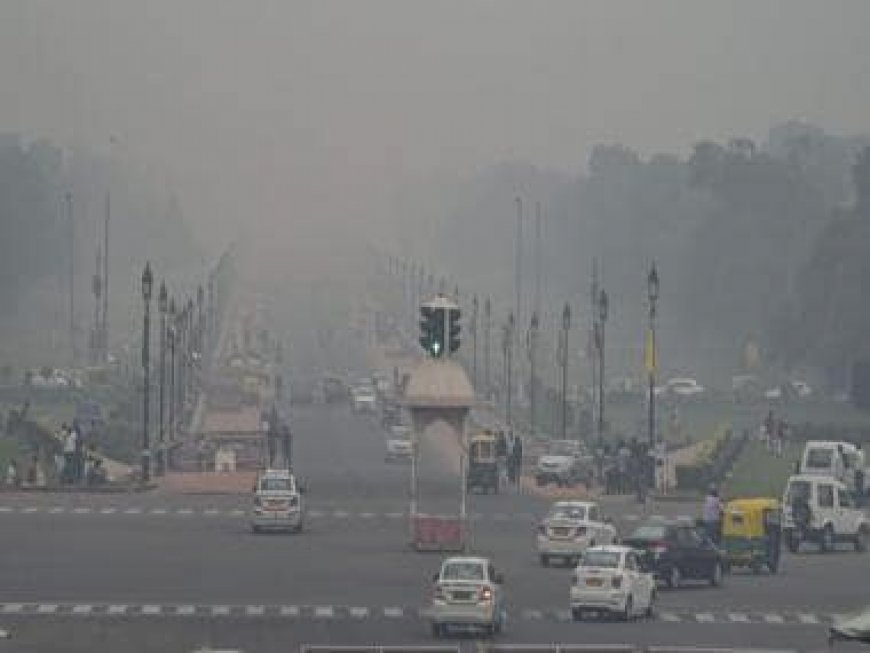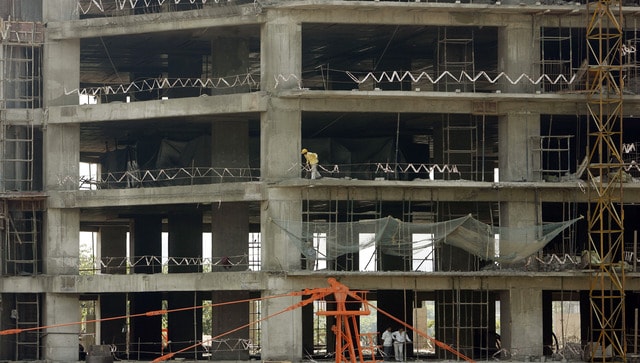Delhi, Mumbai see bad air days again: Are authorities doing enough to curb pollution?
Delhi, Mumbai see bad air days again: Are authorities doing enough to curb pollution?

Delhi and Mumbai are competing once again. But this time, none of the metro cities would want to win the race of which of the two has worse air. There were many days this month when Mumbai’s air quality deteriorated more than the National Capital’s.
The authorities in both cities have announced measures to curb air pollution, which can trigger several health issues. Let’s look at how Delhi and Mumbai are reeling from bad air and what steps are being taken to mitigate the issue.
Delhi, Mumbai choke again
The overall air quality in Delhi improved on Wednesday (25 October) morning but remained in the ‘poor’ category. According to the System of Air Quality and Weather Forecasting and Research (SAFAR), the Air Quality Index (AQI) in the National Capital stood at 202, reported Business Standard.
The air quality in the Delhi University area was at 312 (very poor) as of 10 am, and at 225 (poor) in IIT Delhi.

Last week, the AQI was in the ‘poor’ category in Delhi, with the forecast indicating a plunge to the ‘very poor’ category on 23 and 24 October, “owing to unfavourable meteorological and climatic conditions,” the Commission for Air Quality Management (CAQM) said.
In Mumbai, haze and smog blanketed skylines last week, with the AQI reaching beyond 300 in some parts of the city. According to IQAir, a Swiss technology company, Mumbai was the second most-polluted city after China’s Beijing on Monday (23 October), Business Standard reported. Delhi was the sixth most polluted city among 109 places tracked by IQAir.
According to SAFAR-India, Mumbai has been witnessing ‘moderate’ air quality this week.
Steps taken in Delhi
Delhi has enforced the second phase of the Graded Response Action Plan (GRAP) – a set of measures implemented in the Delhi-National Capital Region (NCR) to combat the deteriorating air during winter months. Divided into four stages, these emergency curbs are imposed only when air pollution touches a certain mark.
Stage II of GRAP comes into effect when the AQI slips between 301 to 400 in the ‘very poor’ category. Under this phase, diesel generator sets are not allowed except for essential and emergency services such as hospitals, railways, metro services, airports, water pumping stations, and “projects of national importance”, reported Indian Express.
CAQM, the Centre’s air quality panel, also directed NCR authorities to increase parking fees to discourage private transport and promote CNG or electric buses and metro trains as part of GRAP’s Stage II.
Resident Welfare Associations (RWA) are also required to give electric heaters to security staff to discourage the burning of biomass. To curb pollution, authorities will use methods such as water sprinkling on roads to check dust pollution and inspect construction and demolition sites to ensure the implementation of dust control norms in identified hotspots, reported Indian Express.
According to Hindustan Times (HT), the Delhi government will deploy special teams to check sources of pollution at the eight newly identified pollution hotspots in the city – Shadipur, ITO, Mandir Marg, Nehru Nagar, Patparganj, Sonia Vihar, Major Dhyan Chand National Stadium, and Moti Bagh. With this, the National Capital has a total of 21 hotspots so far.
Delhi environment minister Gopal Rai said on Monday that the next two weeks are crucial for the city because of Dussehra, Diwali, and farm fires in neighbouring states. “The weather is not in our control but the sources (causing pollution) can be controlled to ensure the impact on people’s health is minimised,” he told ANI.
What is Mumbai doing?
Mumbai’s civic body, Brihanmumbai Municipal Corporation (BMC), recently announced measures to control air pollution in the city.
As per Times of India (TOI), the average concentration of particulate matter over Mumbai has seen a “phenomenal jump” between last October and this month.
On Sunday, the BMC attributed the bad air quality in Mumbai Metropolitan City and Mumbai Metropolitan Region to weather changes.
Weather changes have severely impacted air quality in Mumbai Metropolitan City and Mumbai Metropolitan Region too. Municipal Commissioner & Administrator of BMC, Shri Iqbal Singh Chahal, has directed the implementation of measures to address the issue of air quality.… pic.twitter.com/AALuZMemJS
— माझी Mumbai, आपली BMC (@mybmc) October 22, 2023
Municipal commissioner and administrator of BMC, Iqbal Singh Chahal, at a top-level meeting last week instructed various stakeholders to ensure that dust pollution emerging from construction sites is being strictly monitored, adding that any violations would result in ‘stop work’ notices at those sites, reported IANS.
Around 6,000 sites in Mumbai are witnessing construction currently, as per a PTI report. “At all these places (where construction is going on) dust- and pollution-control measures should be implemented. Else, construction will be stopped, be it private or government work,” the BMC said in a release last week.
Chahal also proposed to erect a 35-foot high iron sheet around construction sites and enclose under-construction buildings with green cloth or jute sheets on all sides.

As per the Friday release by BMC, construction sites will have to instal sprinkler systems within 15 days and anti-smog guns within a month, IANS reported.
Mumbai’s civic body is also planning to use anti-smog vehicle-mounted machines on about 60 major roads across the city.
Vehicles carrying construction debris have to be properly covered with tarpaulin sheets and not be overloaded.
Experts from the Maharashtra Pollution Control Board and the BMC would examine the levels of pollution caused by refineries, Tata Power plant and RCF plant, along with checking these sites for pollution control measures, as per PTI.
The transport commissioner’s office will take stringent action against those with vehicles that are past their service life, do not have a Pollution Under Control (PUC) certificate or are overloading, the BMC release said.
Will BMC’s measures work?
Climate experts have expressed scepticism over the Mumbai civic body’s bid to mitigate pollution. They say that anti-smog guns would not be very effective as they could not tackle the problem of gaseous emissions and fine particles in the air.
“The current problem is that of gaseous emissions, the haze that is created due to ozone levels and of fine particles. The smog guns as seen in Delhi have very little impact. At the least, one could say, this is a small effort in firefighting. It is not solving your problem,” Rakesh Kumar, former head of the National Environment Engineering and Research Institute (NEERI), told TOI.
Speaking to the newspaper, Sachchida Nand Tripathi, co-ordinator of the National Knowledge Network, pointed out that besides construction sites, the role of industrial and vehicular emissions cannot be ignored in their contribution to air pollution.
Tripathi suggested Mumbai should invest in “dense and effective monitoring and real-time analytics” so that alerts about a surge in pollution levels can be issued in real-time and action can be taken accordingly, reported TOI.
With inputs from agencies
What's Your Reaction?



























































